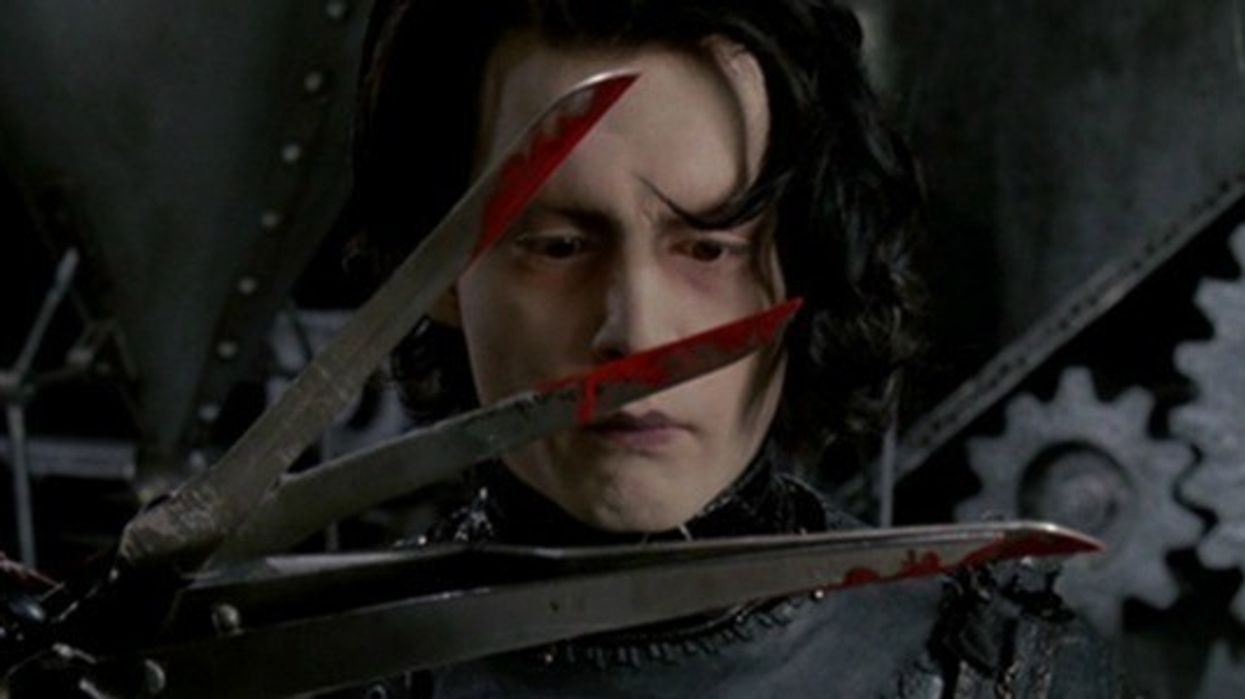The Beauty of Kitschy Horror in ‘Edward Scissorhands’
On the 30th anniversary of Tim Burton’s Edward Scissorhands, let’s celebrate the amazing genre of this film.

There is no doubt that the world within Edward Scissorhands is a bit off-kilter and a little bizarre. Using a style referred to as Burtonesque, director Tim Burton creates a stylized, hyper-real world that feels just slightly out of line with reality. With its pastel-colored houses, brightly colored clothes, and the Avon lady knocking at lonely housewives’ doors, Burton captures the dullness that is “normalcy” through the underappreciated genre that is kitsch.
Kitsch is a style that appeals to what is popular rather than “high art.” It’s good-bad, like hamburger phones, clown art, or snowglobes. While some films strive to feel more realistic and serious, kitsch strives to have fun with the absurdity that is found in reality.
Think of David Lynch’sBlue Velvet, Pee-wee’s Big Adventure, or pretty much any film made by John Waters.
Andrew Benjamin and Charles Rice define kitsch as something that "offers instantaneous emotional gratification without the intellectual effort."
It sounds harsh, but they are basically saying anything kitsch is pretty to look at, but the meaning is surface level. Although kitsch is instant beauty with elements of irony, it’s surface-level meaning isn’t empty. It’s a childhood memory wrapped up in ironic beauty shots that evoke some deeper emotion that is hard to put into words.

Yet, Burton did it. Edward Scissorhands is a complex story that reflects on what Burton’s childhood was like growing up in Burbank, California, during the 1960s.
The film expands on his critique on ideas of conformity to a framework that lacks passion for anything. It is a quietly oppressive system that shuns anything uniquely different. We spend the beginning of the film sitting and talking in the staleness of the pastel-colored, simply sunny suburbia that is exaggerated to contrast the dark fantasy world Edward lives in.
Edward (Johnny Depp) brings that dark contrast into the world. He harshly contrasts the other characters in the film with his black leather outfit, pale skin, and... well... scissorhands. In suburbia, he sticks out like a sore thumb, but not only for his appearance, but his passion for art and life. When he tries to bring this passion into other people’s lives, they use it for their convenience and nothing else. Everyone tells Edward that they know someone who could fix his hands, but they never try to help or accept Edward for who he is.
Burton does use elements of horror to create fear and dread for the audience. Although the film is essentially very bright and cheerful, Burton understands that audiences fear the unknown.
When Peg (Dianna Wiest) turns her mirror to look up at the gothic style castle that overlooks the entire town, we fear for her safety and want her to drive away because something terrifying has to live up there. Even after seeing all the beautiful, expressionistic garden sculptures outside, we are still afraid when the artist emerges from the shadows with scars across his face and scissorhands.

We are so afraid of the unknown that we try to stay away from it, and Burton throws this right into our faces. We struggle to accept anything that is outside of our norms because we don’t know what the outcome of the situation will be. No one truly allows Edward to enter their society because he is a “monster” even though he proves time after time that he wants to be a part of a community. Even though the neighbors in suburbia give him a chance, no one truly accepts that he isn’t a monster. The kitsch-horror of it all is that Edward’s life in suburbia is romanticized while the feeling of ever-impending doom lurks around the corner any time he lifts his blade.
Much like fairy tales, kitsch-horror is a genre that teaches the audience lessons. In Edward Scissorhands, we can see the faults in our own society because of those who stand outside the realm of “normal.” Another kitsch-horror film that does something similar with a different lesson is Gremlins. In Gremlins, the audience learns that you must take responsibility for something—a pet, child, or a mogwai—seriously.
So, when it comes to the driving force behind storytelling, Kitsch-horror focuses on life lessons.

As an audience, we empathize with characters that experience something relatable. Just because we don’t have scissors for hands, we understand the emotional turmoil that Edward is experiencing because we have probably felt like that at some point in our lives, we just never had a word for it until now.
Kitsch-horror is excessive, campy, and removed just far enough from realism that it pulls at a heartstring that might've been lying dormant somewhere deep in the darkest corners of your childhood. That's why Edward Scissorhands can warm your heart while stopping it at the same time.
Let us know your thoughts on kitsch-horror in the comments!











